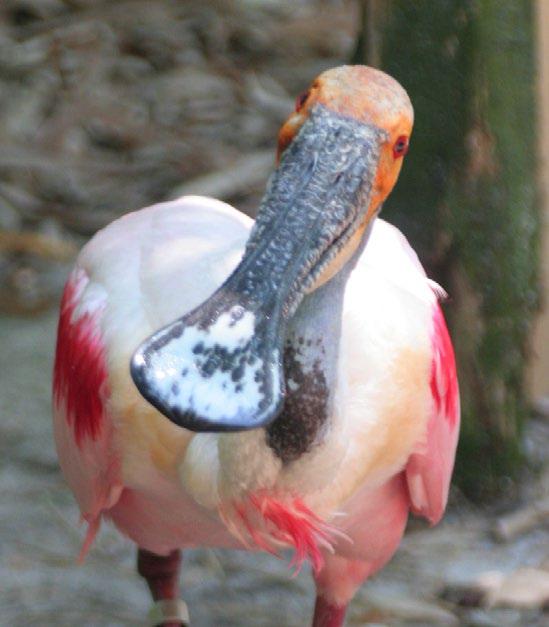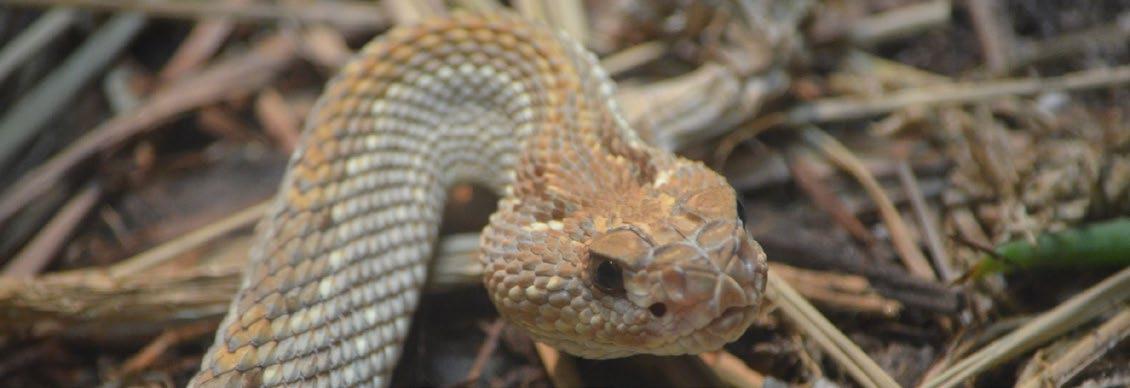
3 minute read
What's New: Births, Hatchings, Acquisitions
By Donna Bear, Curator of Species Management and Jasmine Alvarado, Species Management Officer
April–June 2021 Births & Hatchings
Advertisement
African Pancake Tortoise ....................................................0.0.1 Angolan Colobus ....................................................................0.2 Aruba Island Rattlesnake*..................................................0.0.3 Black-Faced Ibis.....................................................................0.0.5 Boat-Billed Heron.................................................................1.1.1 Cotton-Top Tamarin.............................................................0.0.1 Cownose Ray ........................................................................0.0.4 Eastern Black-and-White Colobus........................................1.0 Golden-Breasted Starling....................................................0.0.1 Magellanic Penguin................................................................2.0 Prehensile-Tailed Skink........................................................0.0.2 PUERTO RICAN CRESTED TOAD †.............................. 0.0.1920 Roseate Spoonbill ................................................................0.0.6 Southern Toad....................................................................0.0.16 Striped Newt.................................................................... 0.0.357 WALDRAPP IBIS.......................................................................0.1 WESTERN LOWLAND GORILLA............................................1.0 Yellow-Backed Duiker............................................................0.1
Acquisitions
EASTERN INDIGO SNAKE ......................................................0.1 Eyelash Palm Pitviper ..........................................................0.0.2 Flat-Tailed Gecko ....................................................................1.1 Giant Anteater .......................................................................1.0 Southern Copperhead ...........................................................1.0
LEGEND: 0.1.2
• First digit male. Second digit female • Third digit sex unknown • Two digits only represent male and female • CAPS = Endangered Species • * (Asterisk) = First time at the Zoo • †(Dagger) = Released back into the wild Cownose Ray
(Rhinoptera bonasus)
Due to the shape of their foreheads, these cartilaginous fish are aptly named the cownose ray. In Spanish they are called cara de vaca, which translates to “face of cow.” An open-ocean species, cownose rays typically live in warm, temperate, and tropical waters; but they can inhabit shallow bays and estuaries as well. They can be found in the Gulf of Mexico, the Caribbean, Atlantic Coast of the US, and even western Africa. While the size of a full-grown cownose ray may differ depending on their habitat, the average width of the body ranges between 2–3 feet, with their tail being up to twice as long. Cownose rays are often confused with sharks when their fin tips break the surface of the water, appearing much like a shark’s dorsal fin. Since sharks and rays are both in the taxonomic subclass Elasmobranchii, the confusion is understandable. There are about 700 species of rays in the world, most of which originated 250 million years ago during the Paleozoic Era. Here at the Zoo, we have five species of rays, including the cownose ray. The other species are freshwater stingrays, bluntnose stingrays, Atlantic guitarfish, and Atlantic stingrays. While you might be able to spot the freshwater stingray in the Lost Temple, you will be able to see, and maybe even interact, with the rest of the species at Stingray Bay.
(Platalea ajaja)
As the name suggests, these wading birds are mostly rosy or pink in color with darker splotches on the wings and body. Many people do not realize that their tails are also slightly orange. When these birds are born, they actually start off greyish-white in color. Their most prominent feature is their spatula-like bill, which they expertly use when foraging for food in shallow waters. While they prefer marshes, flooded pastures, and natural pools, they can also be found in tidal ponds, mangrove pools, and streams searching for food. Their diet mainly consists of aquatic organisms, such as small fish, crustaceans, water insects, and mollusks. Since roseate spoonbills are gregarious, it is common for them to feed in colonies that can also include other species such as ibises, herons, and storks. These birds thrive best in neotropical areas. They can be found in the southeastern United States, Central America, the Caribbean, and throughout South America— typically east of the Andes Mountains. At Jacksonville Zoo and Gardens, you can find them in the Emerald Forest Aviary.

Aruba Island Rattlesnake
(Crotalus durissus unicolor)
As the name might imply, this rattlesnake can only be found on Aruba Island, located in the southern Caribbean Sea almost 20 miles north of Venezuela. The Aruba Island rattlesnake was even featured on the island’s currency, the florin note, in the early 1990s and from 2003 to 2019. Unfortunately, the Aruba Island rattlesnake is one of the rarest in the world. The most recent population count was less than 250 mature specimens in their natural environment. Habitat loss and the introduction of boa constrictors are two major factors for their dwindling population. While adult boa constrictors eat larger prey than the rattlesnakes, young boas compete for the same type of prey: mainly lizards and birds. Due to its endangered status, the Aruba Island rattlesnake is a part of the Species Survival Plan. For the first time in Jacksonville Zoo and Gardens’ history, we have three new, healthy Aruba Island rattlesnakes born June 30. The young had their first weigh-in the same day, each of them being about 15–17 grams, which is just a little heavier than a AAA battery. When full-grown, an Aruba Island rattlesnake can be about 450 grams and reach 2–3 feet in length. You can meet the adult counterpart of these young in the Lost Temple.











